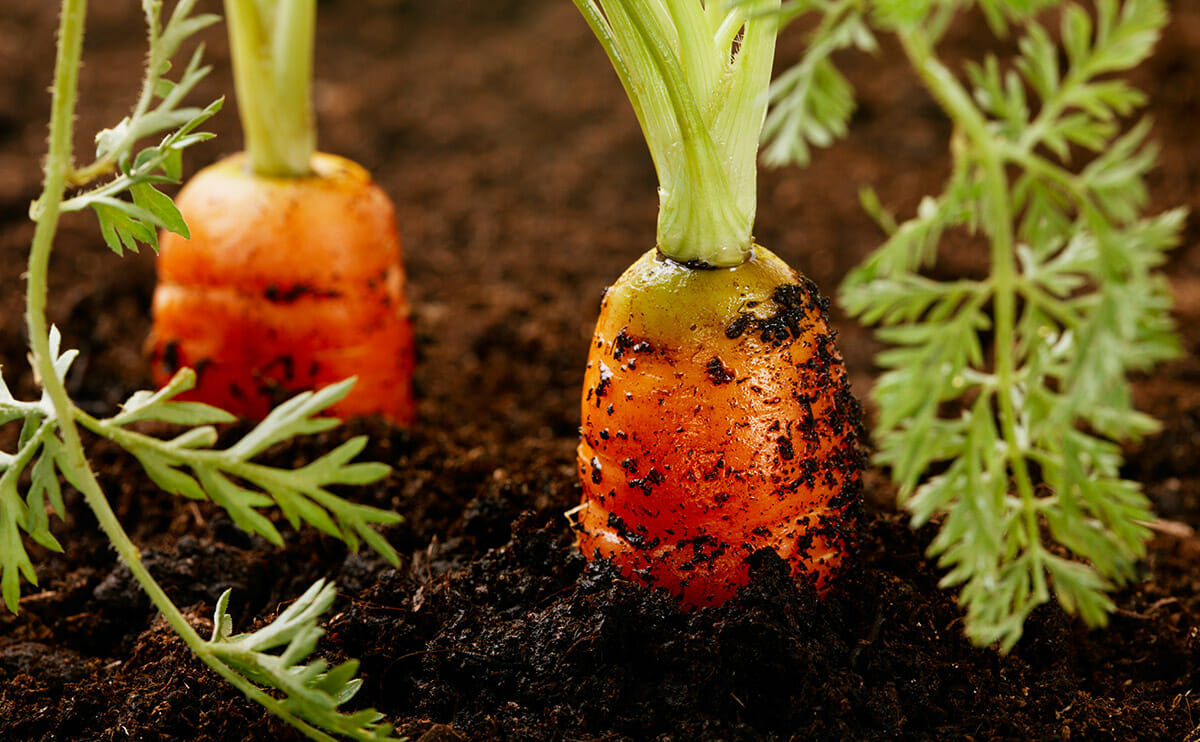Dear Modern Farmer: I just moved on to a two-acre property, and I want to grow. But how do I tell if I've got good soil or not?

Dear Modern Farmer,
I just moved from the city to a two-acre property in the country, and I want to try to live more self-sufficiently and sustainably. I plan to grow organic vegetables, but I want to hurry and get a crop in this year. I’ve gardened before, but I’ve never paid much attention to the soil beyond watering it. Honestly, I think dirt is kind of boring. But now I’m reading about nutrient ratios and chemistry, and I’m kind of freaking out. What if my soil sucks? Where do I start?
Sincerely,
My name is Sandy (but I have no clue if my soil is)
[mf_image_caption layout=”bottom” offset=”no” img=”https://modernfarmer.com/wp-content/uploads/2013/04/manj-orin_photo-by-stephanie-martin1.jpg” desc=”Manjula and Orin Martin.” credit=”Stephanie Martin”]
ORIN: Sandy, let me ask you a question: what are some things you like? David Byrne? Sushi? Mid-century modern furniture? This great stuff is all brought to you by soil. Advanced civilization as we know it is possible only because the earth is dusted with a few precious inches of topsoil. Think of dirt as a finite natural resource – if we want to be sustainable as a society, we need to manage our damn soil. It can take 1,000 years to form one inch of topsoil. It’s a slow, important process. Start liking it.
MANJULA: But Dad, I think she wants to improve her soil in less than 1,000 years.
ORIN: Oh man, we live in such an impatient culture. Okay, there are only two things you need to do to your soil: One, assess it. Two, amend it. Done. Next question!
MANJULA: It sounds like Sandy’s starting at the beginning, so maybe let’s start with assessment?
ORIN: Here’s the deal: Soil, or “dirt,” is made of minerals from decomposed rocks (45 percent or so), air (25 percent), water (25 percent) and organic matter (5 percent). A grower concerns herself mostly with improving the organic matter; the other stuff is pretty hard to change. The object of the game is to figure out what you have in your specific soil: then you can figure out how to amend it to make it grow stuff better. First, get a soil test. This is the best $35 you will ever spend. (I like A&L Western Soil Labs.) They will recommend how much of which nutrients to add. There are plenty of great organic sources for nitrogen, phosphorus, potassium and micronutrients but in the long run compost and green manure are cheaper and more effective than store-bought products.
Advanced civilization as we know it is possible only because the earth is dusted with a few precious inches of topsoil.
MANJULA: A soil test? Like, in a lab? That’s not very, uh, DIY.
ORIN: Look, science is science. Just do the test. Here’s the DIY part: Go look at your soil. Is anything growing on it now? If something’s already growing well, you’re probably okay to start growing this year. Nothing growing? Okay, you need to sell your land and move. But before you move, look at the dirt some more: [mf_ul]
MANJULA: Soil is like that guy you dated in college: you can’t change him. You can’t alter your soil’s texture, but you can amend the soil’s components over time to make it more conducive to plant growth. It’s like therapy, but for dirt.
ORIN: I sometimes feel like being a gardening teacher is sort of like being a therapist.
MANJULA: Except you got to skip going to grad school. So is your advice to Sandy really if her soil sucks, she should move?
ORIN: Well, lucky for Sandy, the panacea for any soil is always the same: Add organic matter (compost and green manure) and distribute it into the soil through cultivation (a.k.a. digging). That’s how organic growers do it and that’s how Big Ag did it until fertilizers were industrialized last century. If your soil is truly awful, sure, you could build raised wooden beds and buy soil, but unless you have dangerous toxins (which is most common in cities), the trouble and expense probably exceed the efforts of improving your actual soil. The basic cycle of soil amendment goes like this: [mf_ol]
[/mf_ol]
No matter how poor your soil is ”“ even if it’s parking-lot soil ”“ if you do this for two or three years it will be radically improved. And in three decades, it’ll be awesome.
MANJULA: Sandy, it sounds to me like you’re a bit impatient to get growing. You’ve made this huge life change, and you’re ready for action. But gardening is a long, slow cycle: you observe, act, observe, react and repeat. So when we say it’s going to take 30 years to get awesome soil, we mean it. But that doesn’t mean you can’t grow perfectly edible food along the way.
Growing food is kind of a pain in the ass.
ORIN: Growing food is kind of a pain in the ass. It’s a lot of work. But success breeds interest. If you work on your soil, it’ll work for you. And it might even help us humans stick around the planet a bit longer. So Sandy, go assess your soil, then come back and we’ll talk about green manure.
MANJULA: Does that mean we get to say “shit” a lot?
ORIN: Definitely.
That is the best summation I’ve ever heard! I have farmed agriculturally and still garden after being disabled. Get yourself a pH pen and learn how to use it. YouTube is your best friend on this stuff. It will not come overnight. Just remember from your mistakes and push forward.